Posted by Nodus Labs | May 25, 2022
GPT-3 Demo: AI Writing Assistant
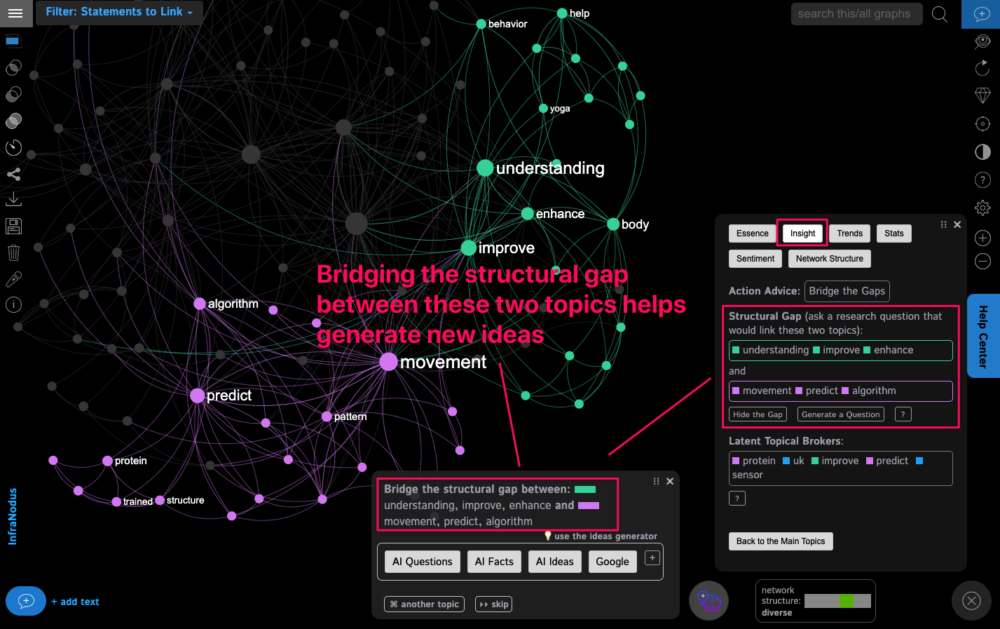
GPT-3 is an AI-based model that can be used to generate high-quality texts. In this article, we will demonstrate how GPT3 can be used as a writing assistant using InfraNodus text network analysis tool to generate better results.
The reason we will be using text networks is their ability to provide additional insights into the structure of a discourse.
If you look at the other AI writing tools, they will often start with a short abstract or key phrase, because they will then “feed” this as a prompt to the GPT-3 model to generate the results. However, once you have a bigger text, you can’t feed the whole text in, as these models often impose a limit on the number of characters that can be contained inside a prompt. In InfraNodus, however, we’re not feeding the whole text into GPT-3, but, rather the structural gaps found in the text: the parts of the discourse that contain important concepts but are not yet well-connected.
First of all, you can start with a certain idea. For example:
“How can machine learning be used to enhance our understanding of physicality and body movement?”
InfraNodus will build a graph and identify the two groups of concepts within that belong together:
- physicality, body, movement; and
- machine, learning, enhance
It will then propose to think of a question or a fact that would connect these two groups together:
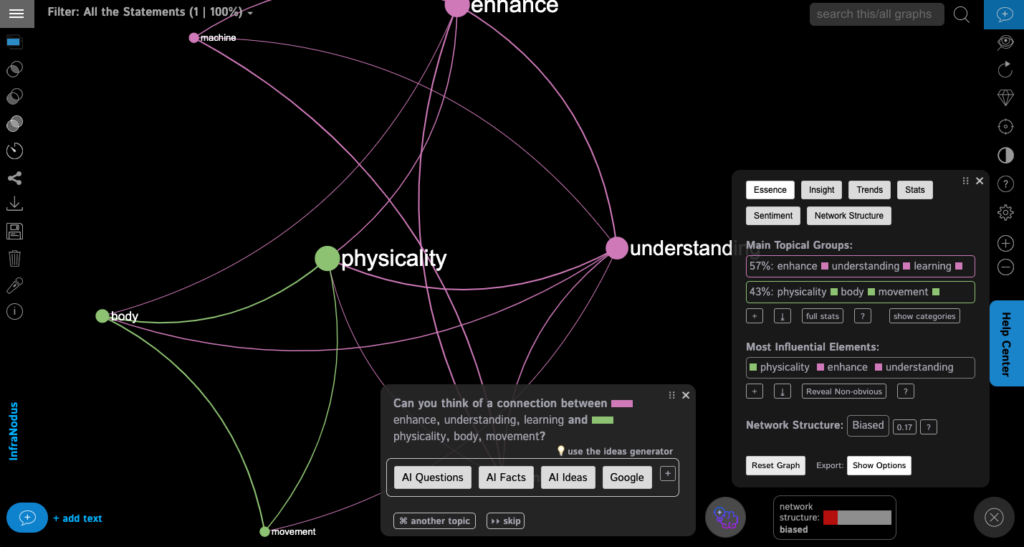
We can choose to generate the AI Facts in relation to this topic, so we get the following results:
“Some researchers believe that we can enhance our understanding and learning by incorporating more physical movement into applications and machines.“
Ok, this sounds interesting. Let’s save it into the graph to visualize it within the discourse and elaborate this idea further:
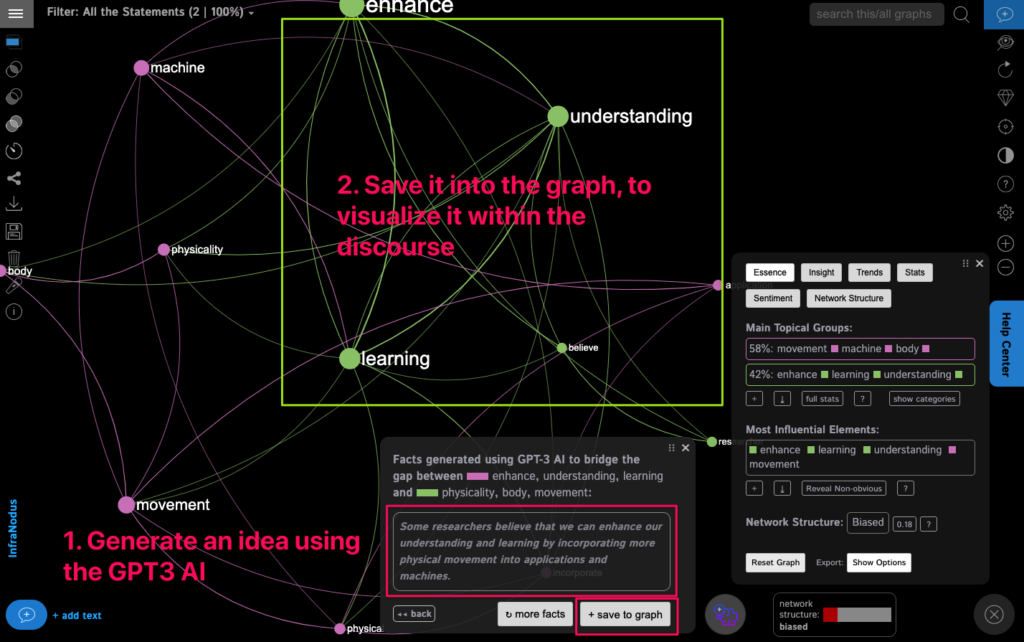
We can generate more ideas and research questions, gradually adding them to the graph. Gradually, we will build a comprehensive graph structure and a relatively long text that we will want to develop further.
At this stage, most of the AI writing tools stop functioning well, because they do not accept long texts as the prompt, and, thus, cannot really generate relevant text any longer.
This is where InfraNodus is different. Using text network analysis, it identifies the main topics, concepts, and gaps within them. Then, depending on the discourse’s structure, InfraNodus will propose to either bridge the structural gaps (if the discourse is dispersed) or explore the peripheral topics (if the discourse is too connected).
Thus, you are always taking into account the text’s structure and try to bring it to a certain equilibrium, according to our ecological variability model:
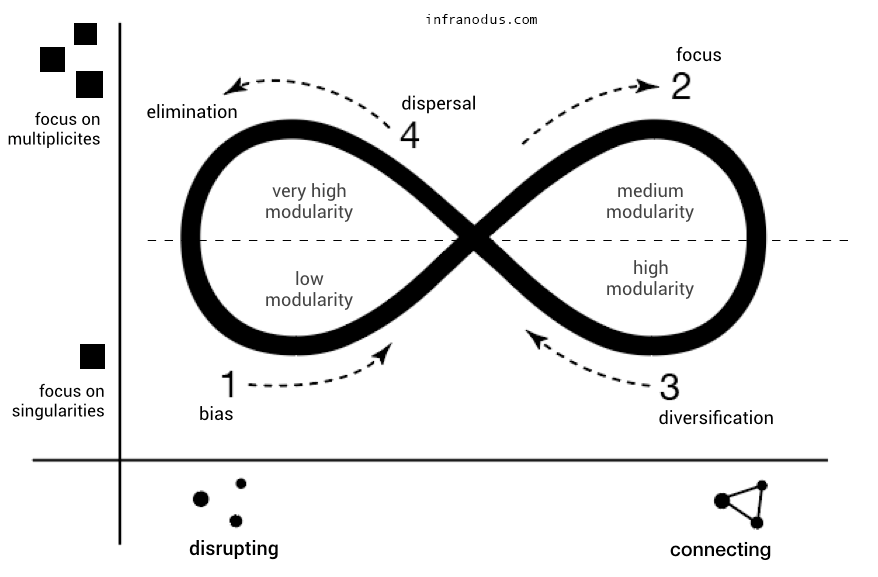
In our example, after a few iterations and multiple ideas generated using the GPT-3 AI, InfraNodus will recommend to connect the less represented topics:
- improve and enhance understanding; and
- algorithms to predict movement
We can think of a question / idea ourselves, which can be a great tool to stimulate our own thinking process, especially if we don’t like the machines to do the work for us. For instance,
“How can the algorithms that predict physical movement can enhance our understanding of physical processes that happen inside the body?”
We can also let the AI do the work for us and generate another research question / fact / idea that will bridge this gap and delivery a short “eureka” moment.
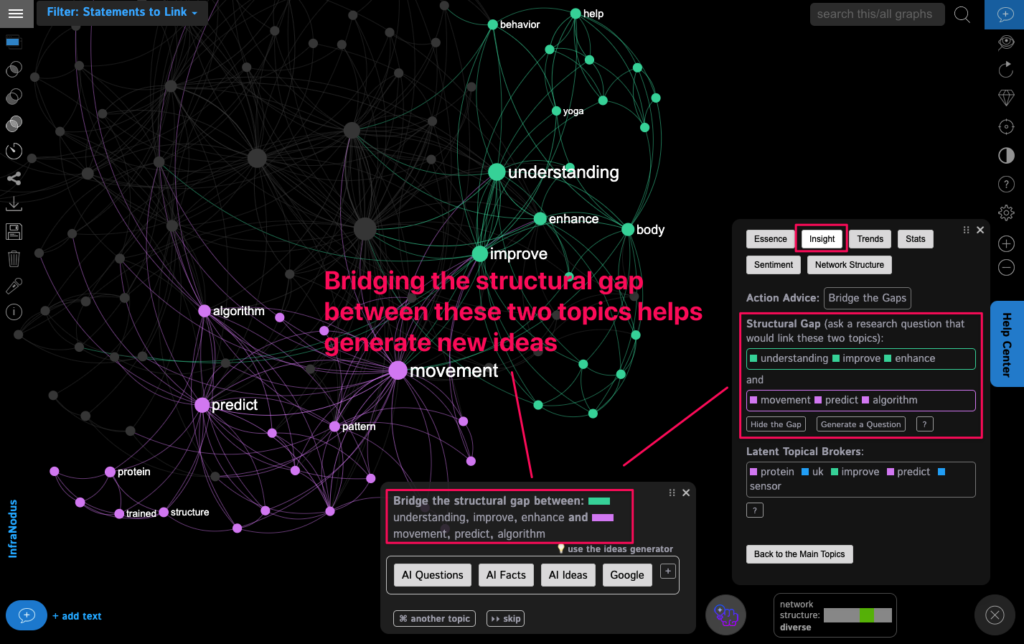
Once we have enough ideas generated (ourselves or with the help of the AI), we can rewrite them in a more coherent form using the graph to guide us through the main concepts.
If you would like to try out this approach, you use InfraNodus. We also recommend you to read our newer article on improving ChatGPT playground outputs.

